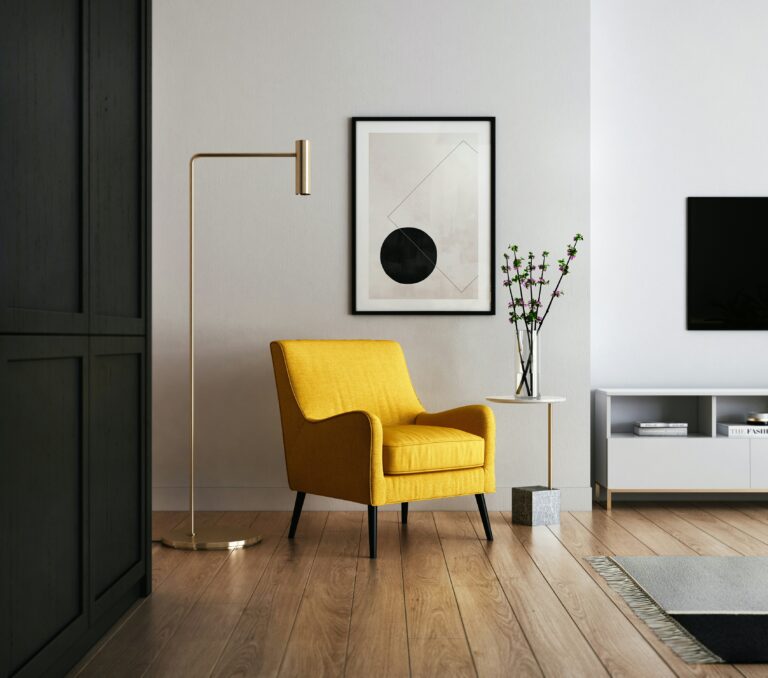
At Kanchan Mehra Centre for Art, we understand that the right furniture doesn’t just stand on its own—it works in perfect harmony with the art you display. From wall murals, sculptures, and custom wall reliefs to vibrant paintings, the art you choose can beautifully complement the furniture in your home or office.
In this blog, we’ll take you through practical interior design tips on how to choose furniture for home and workspace. We’ll also show you how to pair it with meaningful, custom artwork to create a space that’s as functional as it is aesthetically pleasing.
1. Understand the Function and Layout of Your Space
The first step in choosing furniture for your home or office is to understand how the space will be used. Space planning for interior design is all about making the layout work for your daily life.
a. Measure Your Space
One of the most important furniture arrangement tips is to take proper measurements of the room before buying anything. Whether you’re designing a compact flat or a spacious office, knowing the exact dimensions will help you avoid overcrowding or underutilising the space.
Tip: Always allow enough room for movement. Ensure that doors, windows, and walkways are not blocked by large modern furniture pieces.
b. Know the Purpose of the Room
The function of the room should guide your furniture choices. Is it a living space, a study, or a commercial office?
Example:
In a living room, a plush sofa and soft accent chairs create a warm, inviting feel.
In an office, focus on functional items like ergonomic chairs and compact work desks that improve productivity.
c. Maintain Balance and Flow
When thinking about how to choose furniture for home, balance is key. Keep enough space between items and avoid cramming the room.
Tip: In open-plan spaces, define different areas (like seating or dining zones) with thoughtfully placed furniture to maintain flow and purpose.
2. Define Your Style and Aesthetic
Your interior design furniture ideas should reflect your personal taste. From classic to contemporary, the furniture you choose should match the overall aesthetic of your room and the art in your home.
a. Identify Your Personal Style
Are you drawn to modern, traditional, industrial, minimalist or eclectic design? Your personal style will help you choose furniture that fits beautifully.
Example: A minimalist home looks best with clean lines and neutral colours, while traditional settings may feature carved wood and antique-style furniture.
b. Stick to One Theme
A well-coordinated room feels more polished. Stick to a theme that includes colour tones, textures, and patterns across both your furniture and decor.
Example: A contemporary home design with neutral-toned furniture can be elevated with bold geometric wall art or a monochrome mural.
c. Highlight Focal Points
Identify a visual highlight or statement piece in the room—this could be a dramatic custom wall mural, a centrepiece sculpture, or a designer coffee table.
Tip: Let one item take centre stage while others support it in tone and scale, ensuring your space doesn’t feel chaotic.
3. Comfort and Practicality Matter
When selecting furniture, always balance beauty with function. In both home and office settings, furniture should be comfortable and purposeful.
a. Choose Comfortable Furniture
Before you finalise any seating, try it out. A chair or sofa should feel just as good as it looks.
Example:
For a family lounge, go for deep, cushioned sofas that invite you to relax.
For work zones, choose comfortable furniture for home offices, like high-back ergonomic chairs.
b. Invest in Durable Materials
Whether you prefer wood, metal, leather, or fabric, choose durable furniture materials that offer longevity and suit your lifestyle.
Tip:
Leather and metal are great for commercial or high-use areas.
Soft fabrics like linen or velvet are ideal for adding comfort and texture to your living space.
c. Choose Multi-functional Furniture
Smart homes call for smart choices. Use multifunctional furniture design to maximise utility without compromising on style.
Example:
A sleek ottoman that stores blankets.
A bookshelf that doubles as a display unit for art.
4. Match Colours with Your Space
Colour plays a big role in the mood and style of any space. Furniture colour combination tips help ensure that your furniture matches well with wall colours and decorative accents.
a. Match the Room’s Colour Palette
Create harmony by matching your furniture with the existing room colours. Whether your room is neutral or vibrant, the furniture should feel like it belongs.
Tip: Light-coloured furniture helps smaller rooms feel bigger, while dark tones create a more grounded, cosy atmosphere.
b. Decide Between Neutral and Bold
Do you want your furniture to blend in or stand out? Neutral pieces are versatile and let your wall art and furniture matching shine, while bold furniture makes a confident style statement.
Example: A beige or grey sofa works well with a bright abstract painting or mural behind it.
c. Add Accent Colours
Use colourful cushions, chairs, rugs, or even a decorative sculpture to introduce accent colours that make the space pop.
Tip: Use your custom wall reliefs or artwork to introduce new colours that reflect your personality and tie the look together.
5. Focus on Scale and Proportion
It’s important to get the size of your furniture just right—this is what brings balance to a room.
a. Match Furniture to Room Size
Oversized furniture in a small room can feel cramped, while small items in a large room can look lost. Think about how to measure furniture for a room before buying.
Tip:
Large rooms can handle king-size beds or sectional sofas.
Small rooms need compact, smartly-designed furniture.
b. Keep Proportions in Check
The proportions between different items in the room should also make sense. A tiny side table beside a bulky sofa, for example, may look mismatched.
Tip: Pair large pieces like a big mural with equally bold furniture so the room feels balanced and intentional.
6. Personalise with Custom Art
The finishing touch to any well-designed space is custom artwork for home. Personalised art adds meaning and character to your interiors.
a. Add a Personal Touch with Art
Mass-produced decor can feel cold. Custom art, on the other hand, brings a unique energy that resonates with your personal taste.
Example: A bespoke custom sculpture in your entryway, or a hand-painted wall mural behind your bed can completely transform the feel of the room.
b. Combine Art and Furniture
There’s nothing more refined than a perfect blend of custom furniture and art combination. Together, they create a rich, cohesive look that’s both functional and artistic.
Example: A hand-carved dining table paired with a mural featuring natural elements, or a minimalist sofa matched with a striking wall relief, can make your home feel special and thoughtfully curated.
Final Thoughts
Choosing furniture is about more than filling a room—it’s about expressing who you are, ensuring comfort, and complementing your interior design vision. At Kanchan Mehra Centre for Art, we believe that furniture and art in your home should come together to create a space that feels warm, inspiring, and uniquely yours.
By following these tips and embracing custom art and design, you can turn any space—whether it’s your home, studio, or office—into a place that truly reflects your personality.
